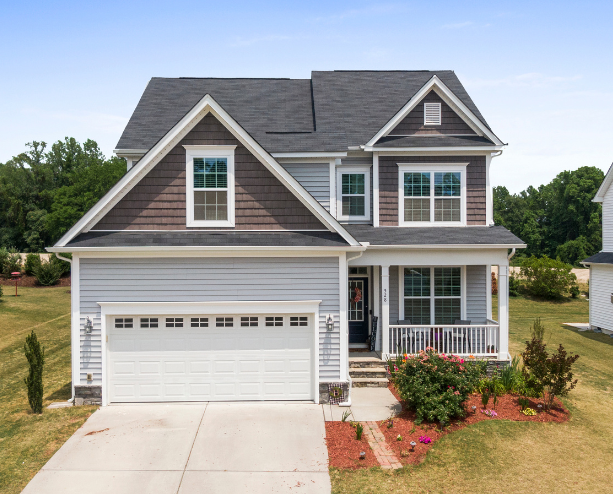Refinancing your mortgage can be a powerful tool to lower your monthly payment, reduce your interest rate, or tap into your home’s equity. Whether you’re looking to improve your financial flexibility or pay off your loan faster, refinancing can offer new possibilities—if you understand how it works.
When you refinance your mortgage, you replace your existing home loan with a new one—usually with different terms. This could involve switching from an adjustable-rate to a fixed-rate mortgage, shortening the loan term, or simply getting a better interest rate.


Homeowners choose to refinance for various reasons: to lower their interest rate, reduce monthly payments, eliminate private mortgage insurance, or access equity through a cash-out refinance. It’s a way to realign your mortgage with your current financial goals.
Refinancing is most beneficial when interest rates have dropped, your credit score has improved, or your home’s value has increased. It’s also worth considering if you want to switch loan types or restructure your payment schedule for long-term savings.


Refinancing your mortgage can be a smart way to consolidate high-interest debt into one manageable monthly payment. By tapping into your home’s equity, you can pay off credit cards, personal loans, or other outstanding balances at a lower interest rate. This not only simplifies your finances but can also help you save money over time and reduce financial stress.
A second mortgage allows you to borrow against the equity you’ve built in your home—without refinancing your existing mortgage. This can be a great option for covering major expenses like home renovations, tuition, or unexpected medical bills. While second mortgages typically have higher interest rates than first mortgages, they can offer flexible access to funds without altering your primary loan.


A Home Equity Line of Credit (HELOC) is a flexible refinancing option that allows homeowners to tap into their home’s equity as needed—similar to using a credit card, but with much lower interest rates. With a HELOC, you can borrow against your home’s value for things like home improvements, debt consolidation, or unexpected expenses. You only pay interest on the amount you draw, making it a smart choice for those who want ongoing access to funds while maintaining control over their repayment schedule.
Most lenders charge fees to refinance a loan. So, if you plan to only stay in the property for a couple of years, your monthly savings may not accumulate to recoup these costs. Example: A lender charged $1,000 to refinance your loan that resulted in saving you $50 each month; it would take 20-months to recoup your initial costs. Some lenders will charge a slightly higher than average interest rate on refinance loans, but will waive all costs associated with the loan. This will depend on the interest rate on your current loan.
Starting with an application fee for $250 – $350, you may need to pay an origination fee typically 1% of your loan amount. In most cases you will pay the same costs you had with your current home loan for the title search, title insurance, lender fees, etc. The total sum could cost up to 2-3% of the loan amount. If you don’t have the funds to pay for associated loan costs, you can search for lenders that offer “no-cost” loans which will charge a slightly higher interest rate.
A point is a percentage of the loan amount, or 1-point = 1% of the loan, so one point on a $100,000 loan is $1,000. Points are costs that need to be paid to a lender to get mortgage financing under specified terms. Discount points are fees used to lower the interest rate on a mortgage loan by paying some of this interest up-front. Lenders may refer to costs in terms of basic points in hundredths of a percent, 100 basis points = 1 point, or 1% of the loan amount.
Yes, if you plan to stay in the property for a least a few years. Paying discount points to lower the loan’s interest rate is a good way to lower your required monthly loan payment, and possibly increase the loan amount that you can afford to borrow. However, if you plan to stay in the property for only a year or two, your monthly savings may not be enough to recoup the cost of the discount points that you paid up-front.
Mortgage rates can change from the day you apply for a loan to the day you close the transaction. If interest rates rise sharply during the application process it can increase the borrower’s mortgage payment unexpectedly. Therefore, a lender can allow the borrower to “lock-in” the loan’s interest rate guaranteeing that rate for a specified time period, often 30-60 days, sometimes for a fee.
It’s unsure how interest rates will move at any given time, but your lender may estimate where interest rates are headed. If interest rates are expected to be volatile in the near future, considering locking your interest rate may be good because it allows you to qualify for the loan. Or, if your budget could handle a higher loan payment, or lender’s lock fees, you may want to let interest rates “float” until the loan closing.
Even with poor credit getting a home loan is still possible. A lender will consider you to be a risky borrower and to compensate for this they will charge you a higher interest rate, and expect a higher down payment usually 20%-50%. The worse your credit history is, the more you can expect to pay.
There are two important things to consider when choosing one lender over another one: